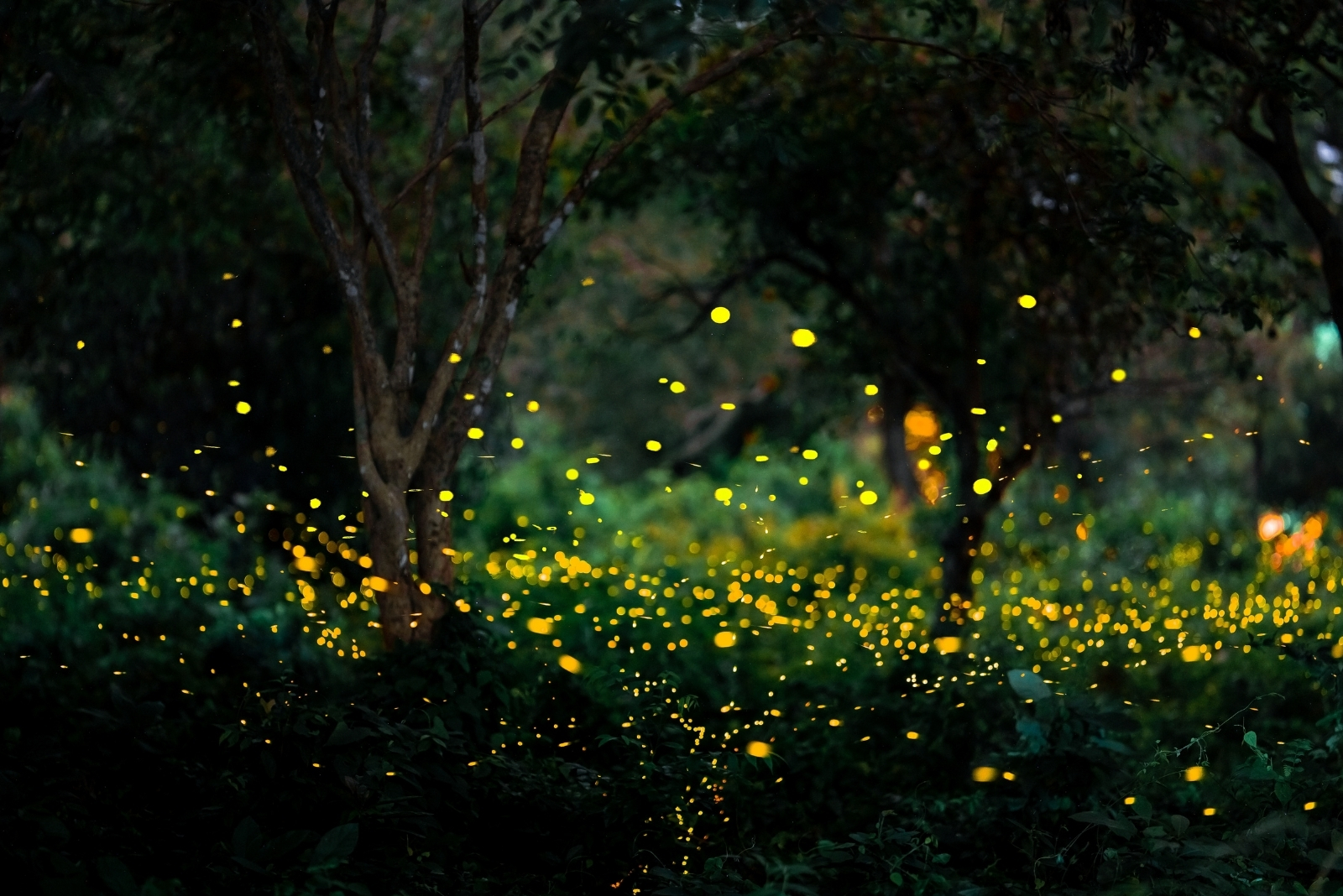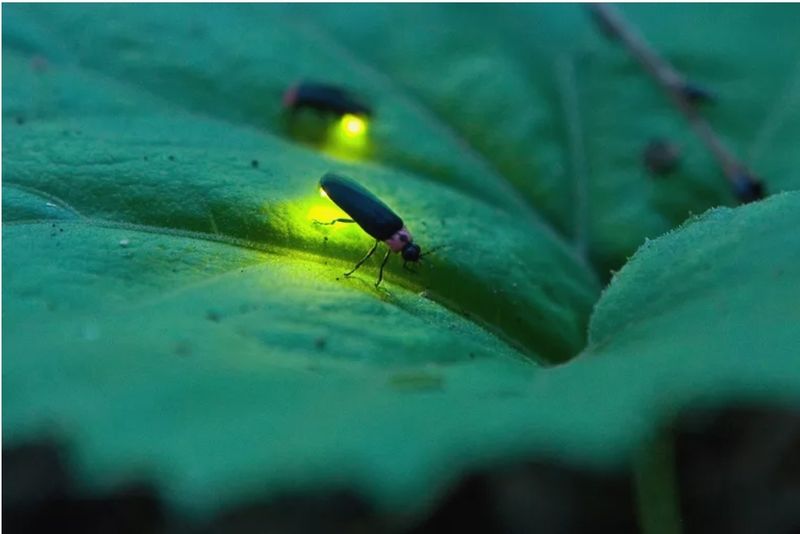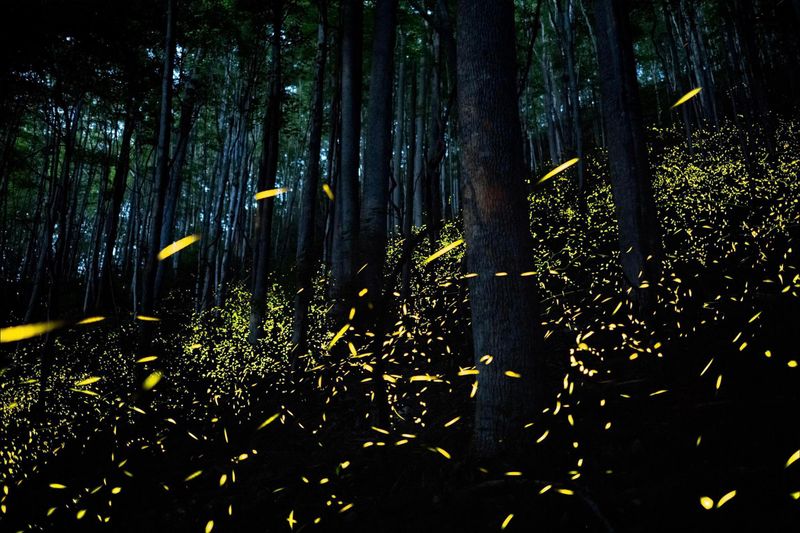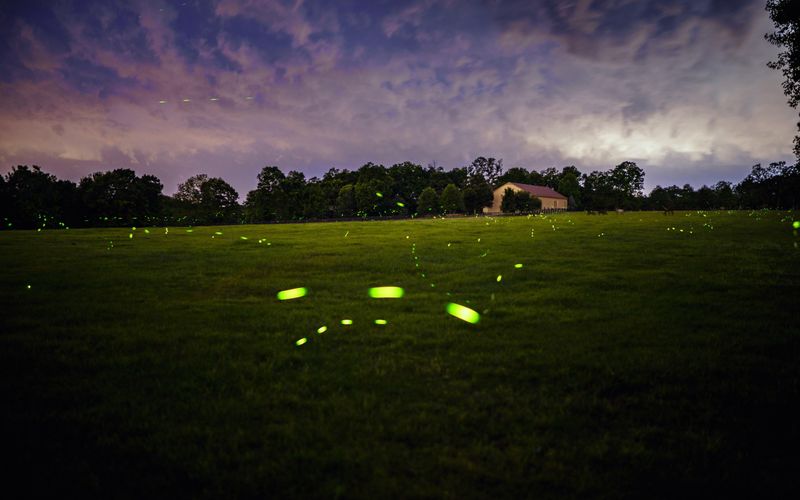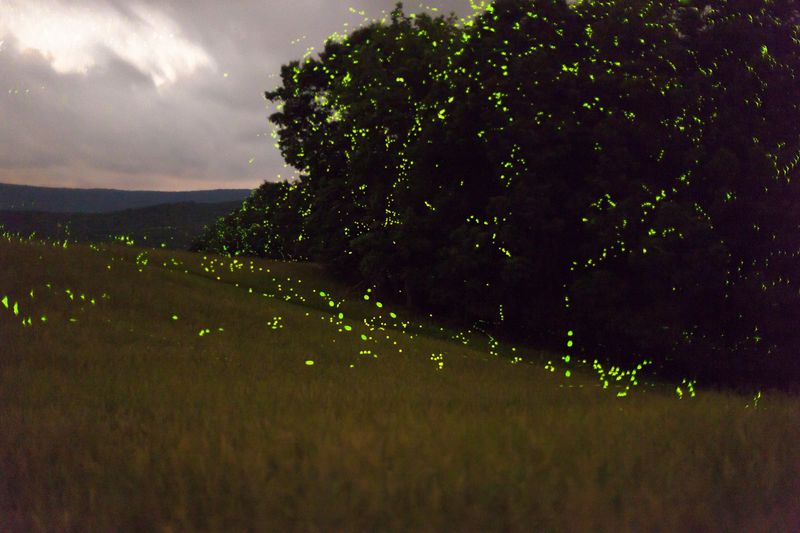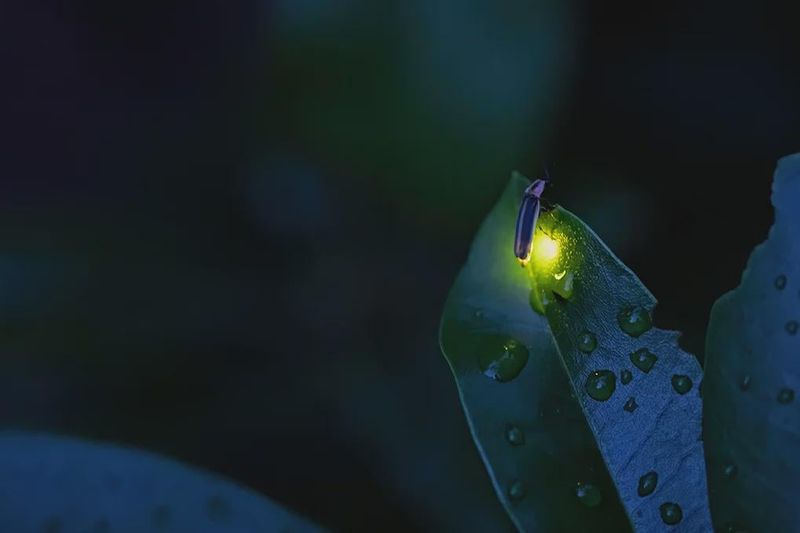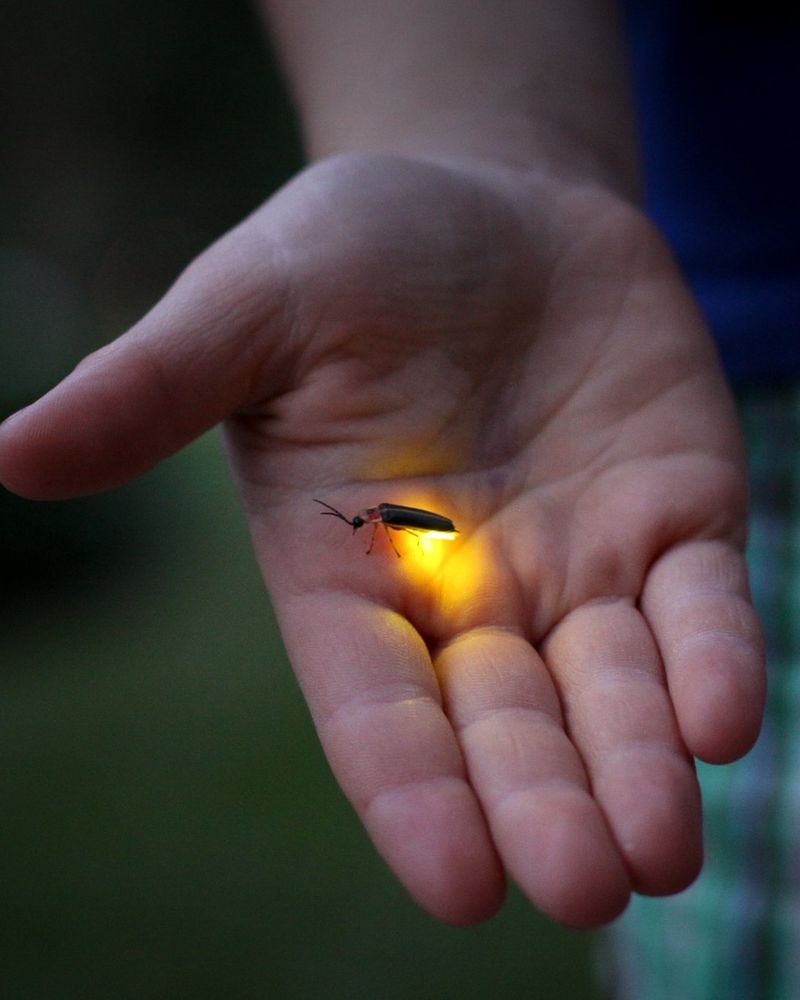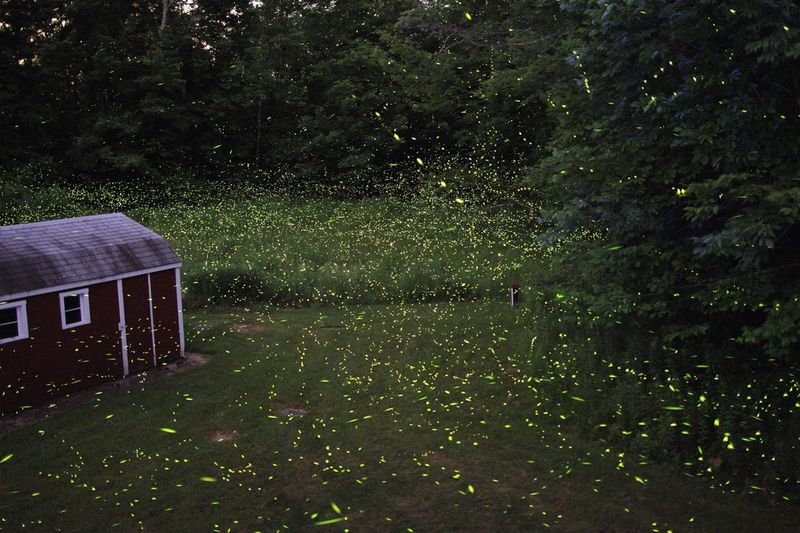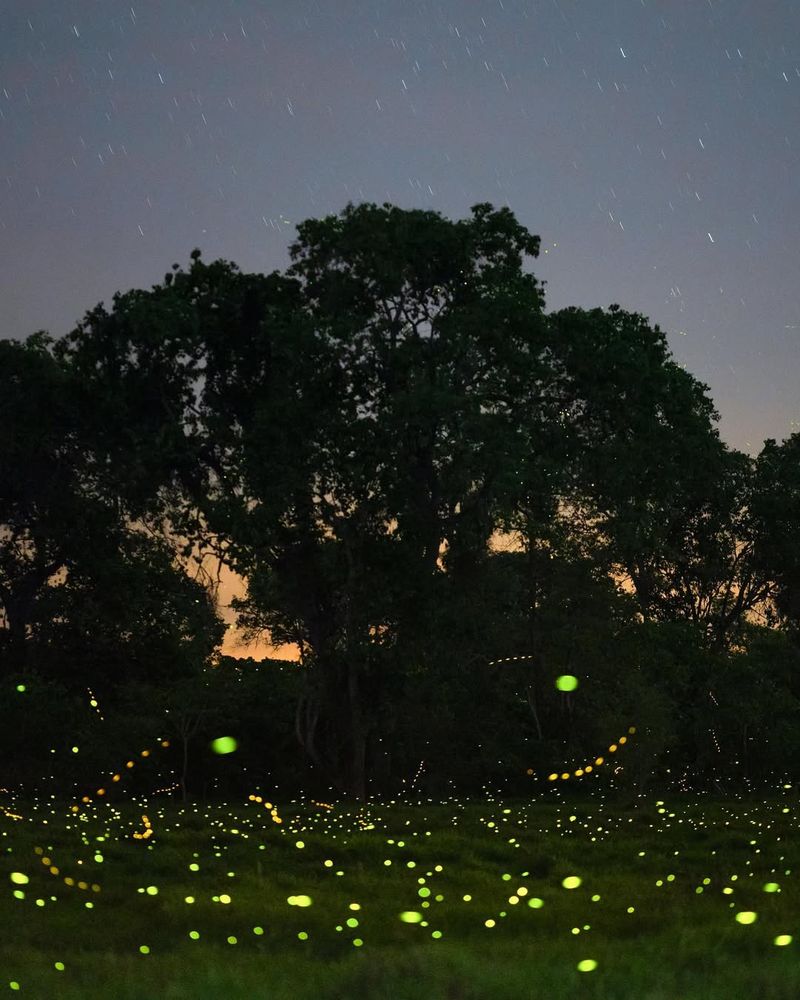Arizona nights used to glow with fireflies, but those tiny lights are fading. Habitat loss, climate shifts, and light pollution all play a role in their decline.
Losing them changes the magic of summer evenings. Learning why helps gardeners take steps to bring them back.
1. Light Pollution Drowns Out Their Signals
City lights and streetlamps are making it nearly impossible for fireflies to find each other in Arizona. Male fireflies flash specific patterns to attract females, but bright artificial lights wash out these delicate signals completely.
Imagine trying to use a flashlight to signal someone during the middle of the day—that’s what fireflies face every night. Communities across Arizona have expanded rapidly, bringing more outdoor lighting that confuses these insects.
Without darkness, fireflies can’t communicate or reproduce successfully, causing their numbers to drop year after year.
2. Pesticide Use Kills Them at Every Life Stage
Chemical sprays used on lawns and farms don’t just kill pests—they wipe out fireflies too. Arizona homeowners and farmers apply pesticides that poison firefly larvae living in the soil and adult fireflies resting on plants.
Firefly babies, called larvae, spend up to two years in the ground eating snails and slugs. When pesticides soak into Arizona soil, these young fireflies die before ever getting a chance to glow.
Even organic gardens can accidentally harm fireflies if nearby properties use strong chemicals that drift through the air.
3. Habitat Loss Removes Their Homes
Bulldozers and building projects are erasing the wild spaces fireflies need to survive throughout Arizona. When developers clear land for new homes and shopping centers, they destroy the moist soil and vegetation fireflies depend on.
Fireflies need specific conditions like leaf litter, rotting logs, and damp ground to complete their life cycle. Arizona’s rapid growth means less natural habitat remains for these glowing insects.
Parking lots and concrete replace the meadows and streambeds where fireflies once thrived in abundance across the state.
4. Climate Change Disrupts Their Life Cycles
Rising temperatures and changing rainfall patterns in Arizona are throwing firefly populations completely off balance. Fireflies emerge at specific times based on temperature and moisture levels, but climate change has made these signals unreliable.
When males and females emerge at different times, they can’t find mates to continue their species. Arizona has experienced more extreme heat and longer droughts recently.
Firefly larvae also need moist environments to survive, but drier conditions across Arizona mean fewer young fireflies make it to adulthood each season.
5. Water Sources Are Drying Up
Streams, ponds, and wet areas where fireflies breed are vanishing across Arizona at an alarming rate. Many firefly species specifically need moisture-rich environments near water to lay eggs and support their young.
Arizona’s water shortage problems affect more than just people—fireflies lose essential breeding grounds when creeks dry up. Some firefly larvae actually live in wet mud or shallow water edges.
Without these damp habitats, entire firefly populations disappear from Arizona neighborhoods that once saw hundreds of glowing insects each summer evening.
6. Invasive Species Compete for Resources
Foreign plants and animals brought to Arizona are pushing fireflies out of their natural homes. Invasive species often grow faster and spread more aggressively than native plants that fireflies have relied on for thousands of years.
When non-native grasses replace Arizona’s natural vegetation, the soil conditions change and become unsuitable for firefly larvae. Some invasive insects also prey on firefly eggs and young.
Buffelgrass, a particularly aggressive invader in Arizona, creates dense mats that fireflies can’t penetrate, leaving them nowhere to hide or hunt for food.
7. Artificial Surfaces Replace Natural Ground
Concrete, asphalt, and artificial turf are covering up the natural ground fireflies need in Arizona communities. Firefly larvae must burrow into real soil to hunt for prey and develop over multiple years.
When Arizona homeowners replace natural landscaping with fake grass or pave their entire yards, fireflies lose critical habitat. Hard surfaces also prevent moisture from reaching the soil where firefly babies live.
Even decorative rock yards, popular throughout Arizona, don’t provide the leaf litter and organic matter firefly larvae need to survive and grow strong.
8. Lack of Public Awareness Slows Conservation
Most Arizona residents don’t realize fireflies live in their state or understand how their actions affect these insects. Unlike bees or butterflies, fireflies haven’t received much attention from conservation groups or educational programs.
When people don’t know fireflies exist in Arizona, they can’t take steps to protect them. Simple changes like reducing outdoor lighting or avoiding pesticides could help, but few homeowners make these connections.
Schools and nature centers across Arizona rarely teach about fireflies, meaning younger generations grow up without appreciating or protecting these remarkable glowing insects.

